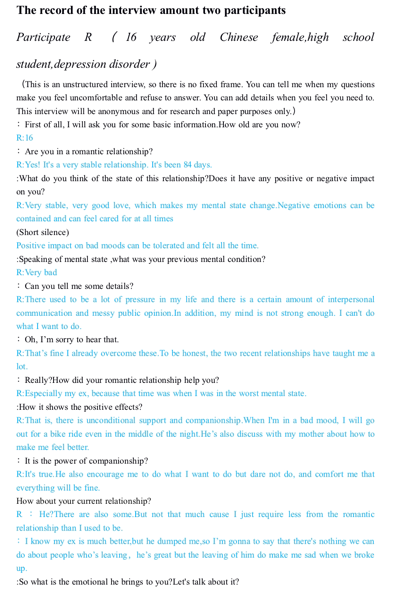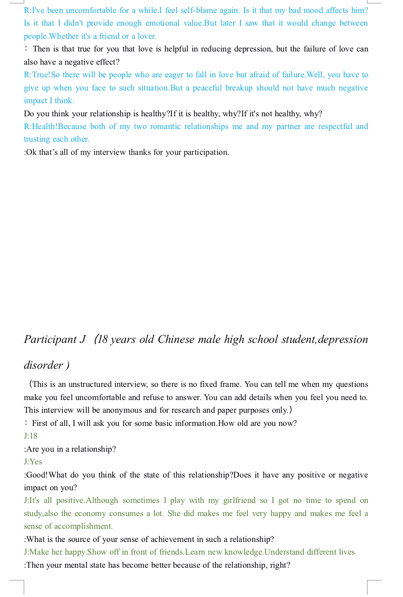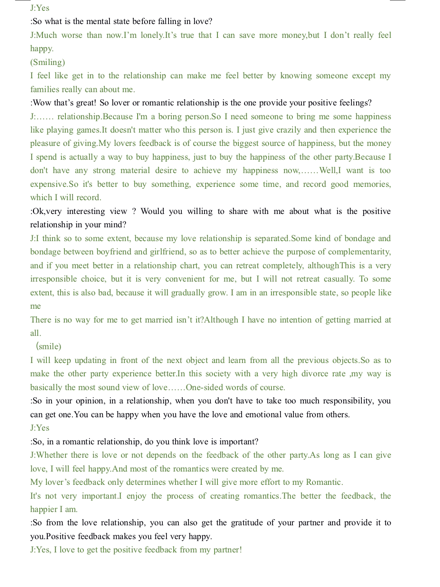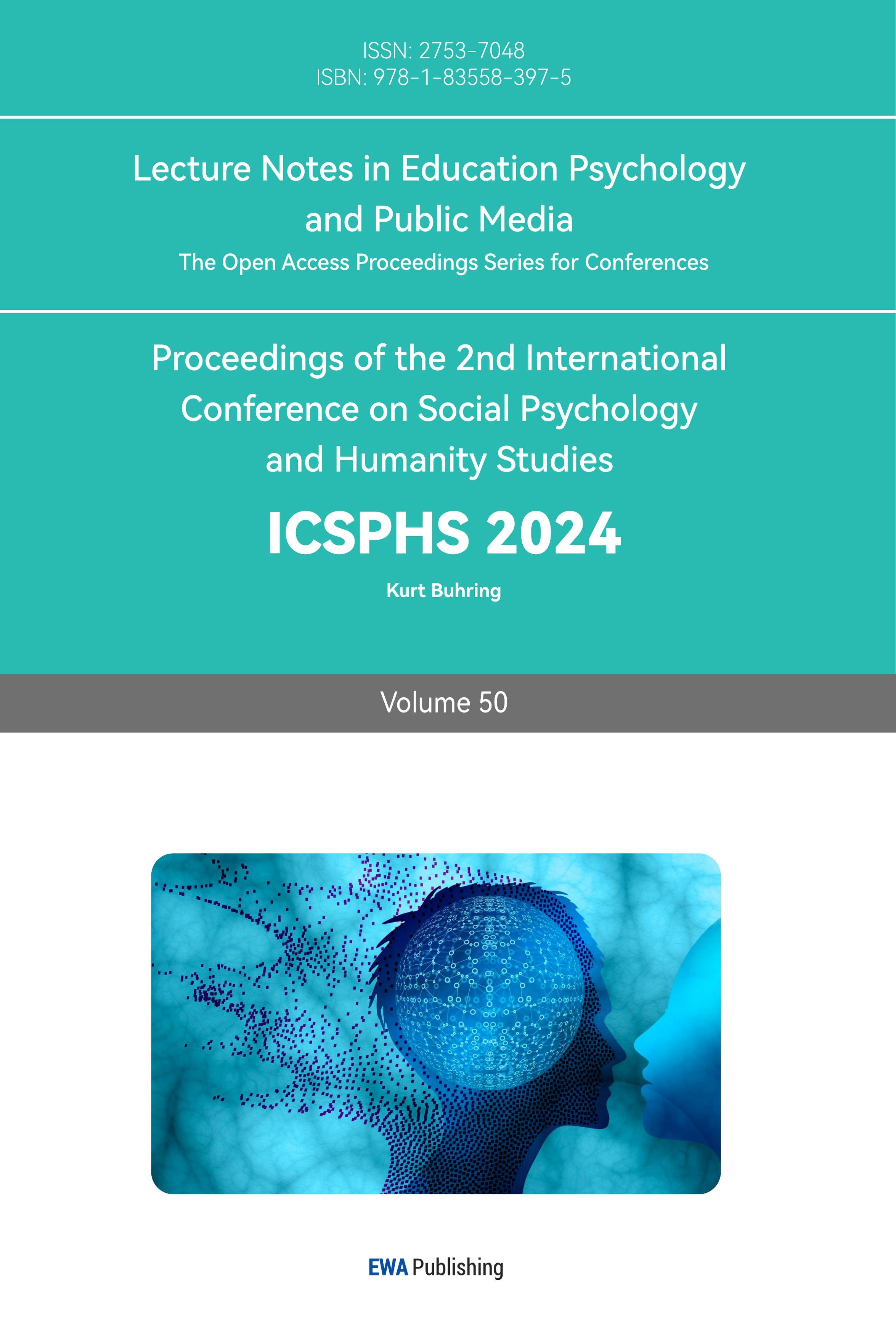1. Introduction
According to the definition given by the World Health Organization depression is a common mental disorder. It involves a depressed mood or loss of pleasure or interest in activities for long periods of time [1].
The research shows that depression impacts cognitive processes and behavior. There is good evidence that depressed mood affects the relative balance between positive and negative cognition [2]. Thus, depressive cognition seems to produce depressive emotions, which in turn increases the likelihood that these recognitions will lead to further depression. This interrelationship between depression and cognition may form the basis of a vicious cycle that persists and intensifies.
There’s support by the human brain imaging study shows that many brain regions mediate the diverse symptoms of depression which have demonstrated changes in blood flow or related measures in several brain areas, for example including regions of the prefrontal and cingulate cortex, hippocampus, striatum, amygdala, and thalamus [3].
The evidence from the neurological site shows the negative effects of depression the neocortex and hippocampus may mediate problems in cognitive impairment and depression, such as memory impairment, feelings of worthlessness, despair, guilt, doom and suicidal tendencies. The striatum and amygdala and their associated brain regions play an important role in emotional memory and can therefore immediate pleasure deficit (reduced motivation and reward for pleasurable activities), anxiety and decreased motivation to name a few.
Control of depression was very important. Depression can impair daily functioning, affecting relationships, work performance, and overall quality of life. When depression is managed, individuals can engage more effectively in their personal and professional lives. Secondly, depression can lead to physical health issues, including heart problems, weakened immune response, and pain. By controlling depression these risks can be reduced.
Romantic relationships refer to mutual, ongoing and voluntary interactions between two partners that are characterized by specific expressions of affection and intimacy. Baumeister and Leary [4] suggest that belonging and developing meaningful positive relationships are fundamental human motivations. Later, they suggested that the fulfillment we derive from romantic relationships cannot be obtained from non-relationships. A positive romantic relationship plays a very important role in the development of the adolescent, according to the research Romantic self-concept is related to whether one has a romantic relationship and to the quality of that relationship [5-6]. Positive romantic relationship can make the adolescent who undergoes it feel like an attractive partner this confident thought can bring happiness and self-esteem.
There’s also the neurological perspective that’s able to provide evidence for the positive influence that could get from the positive relationship. Positive romantic relationships have a stress-reducing and health-promoting potential, as they carry the ability to heal or facilitate beneficial motivation and behavior this process involves the secretion of oxytocin, vasopressin, dopamine, and the release of serotonergic signaling as endorphin and endogenous morphinergic mechanisms, coupled to nitric oxide auto-regulatory pathways to play a role [7].
As the conclusion from all the previous information given the researcher would like to came up with the hypothesis that the positive relationship is helpful on reducing depression.
2. Methodology
2.1. Primary research
To gather firsthand insights, an interview-based research approach was employed in this study. A sample of 2 participants, consisting of individuals who identified themselves as being in committed romantic relationships and reported themselves with depression disorder was selected. The interview questions were designed to elicit detailed responses regarding the impact of romantic relationships on depression levels, coping mechanisms employed within the relationship, and the overall influence on mental well-being.
The researcher has used the semi-structured interview method to collect the primary data which is more conversational and dynamic than the closed structure interview. Which has a set of questions that they aim to be answered, but do not have a standardized format to follow (See Appendix). This means that the conversation can flow a little bit better, while still achieving the research aim and getting relevant information from respondents. This type of interview can gather both quantitative and qualitative data.
The researcher will explain the project, the true aims and the procedure participants will go through in this interview. Researcher has also protected the participants with their both psychological and physical health in the way by telling the participants they are all allowed to stop the interview whenever they are feeling uncomfortable, researcher starts with the prompt from participants.
2.2. Findings and Analysis
The participants’ responses revealed several key themes that highlight the positive effects of romantic relationships in reducing depression levels. Detail to be seen in the Appendix.
2.2.1. Emotional Support
Participants emphasized the significant role of emotional support provided by their partners. They highlighted how having a loving and understanding partner can create a sense of security and comfort, leading to a reduction in depression. Emotional support from a partner was seen as a crucial factor in managing stressors and helping individuals cope with depression-inducing situations.
2.2.2. Communication and Validation
Effective communication within the relationship was seen as a vital component in reducing depression levels. Participants described how open and honest conversations with their partners allowed them to express their fears and concerns, leading to a sense of validation. Feeling heard and understood by their partner helped alleviate depression by providing reassurance and a sense of being supported.
2.2.3. Shared Activities and Distraction
Engaging in shared activities and hobbies with their partners was found to be an effective way of reducing depression. Participants expressed that participating in enjoyable activities together helped them temporarily shift their focus away from anxious thoughts, providing a much-needed distraction and promoting relaxation.
2.2.4. Building Trust
Trust emerged as a recurring theme in the interviews. Participants highlighted how trust in their partner's commitment and loyalty contributed to a sense of security and stability in the relationship. This trust reduced depression levels by diminishing worries about the future or fear of abandonment.
2.2.5. Increased Self-Esteem
Participants reported that being in a loving relationship positively influenced their self-esteem and self-worth. The emotional support and affirmation received from their partners helped them develop a more positive self-perception, which, in turn, reduced anxiety and promoted a greater sense of overall well-being.
2.3. Secondary research
A secondary research approach was employed in this paper. A thorough review of academic journals, research papers, and reputable sources was conducted to collect relevant information on the topic. The selected studies focused on the impact of romantic relationships on depression reduction, exploring various mechanisms and factors that contribute to this positive effect.
2.4. Findings and analyses
The analysis of existing literature reveals several key findings that highlight the positive effects of romantic relationships in reducing anxiety levels.
2.4.1. Emotional Support
Numerous studies emphasize the role of emotional support provided by romantic partners in reducing anxiety. Close and supportive relationships offer individuals a haven where they can share their fears and concerns. Emotional support from a partner helps individuals feel understood, validated, and less alone, thereby reducing anxiety symptoms. According to the study conducted by KW Austin [8], in the context of intimate relationship, the emotional processing, expressive tendency and stress perception of stressors are related to daily social support processes and daily relationship outcomes.
2.4.2. Social Support
Romantic relationships provide a valuable source of social support. Partners often serve as confidants, offering encouragement, reassurance, and practical assistance. Research consistently shows a strong link between social support and lower anxiety levels, indicating that having a supportive partner can buffer against stressors and contribute to improved mental well-being. The idea that good social relationships can better buffer the development of mental health problems is put forward by Saul McLeod [9], who suggests the use of therapeutic interventions to help those with insecure attachment relationships to seek support in a more adaptive way.
2.4.3. Attachment and Security
Attachment theory John Bowlby suggests that individuals in secure and healthy romantic relationships experience reduced anxiety levels [10]. Secure attachments foster a sense of safety, trust, and stability. Partners who are responsive and available provide a sense of security, which helps alleviate anxiety by reducing worries about abandonment or rejection.
2.4.4. Coping Mechanisms
Romantic relationships can enhance an individual’s repertoire of coping mechanisms. Partners often offer guidance, perspective, and practical strategies for managing depression-inducing situations. Moreover, engaging in shared activities or hobbies with a partner can provide a welcome distraction and promote relaxation, further reducing depression levels.
2.4.5. Self-esteem
Positive romantic relationships have a significant impact on individuals’ self-esteem, which in turn contributes to lower anxiety levels. Partners’ affirmation, love, and acceptance foster a positive self-perception, leading to increased self-confidence and reduced depression. Moreover, feeling valued and supported by a partner strengthens one's overall sense of well-being.
3. Conclusion
The primary research interviews provided valuable insights into the positive effects of romantic relationships on reducing depression levels. The findings demonstrate that emotional support, effective communication, shared activities, trust, and increased self-esteem are key factors in fostering a reduction in anxiety symptoms. These findings underscore the importance of nurturing healthy and supportive romantic relationships as a means to promote mental well-being and alleviate anxiety.
The analysis of existing literature highlights the positive effects of romantic relationships on reducing depression levels. Emotional support, social support, attachment and security, coping mechanisms, and improved self-esteem emerge as key factors in promoting anxiety reduction within romantic relationships. These findings underscore the importance of nurturing healthy and supportive romantic partnerships as a means to alleviate depression symptoms and enhance overall mental well-being.
It is important to note that while this research highlights the positive impact of romantic relationships on anxiety reduction, each person’s experience may vary. While this analysis provides valuable insights, it is essential to recognize that individual experiences may vary. Relationships are complex, and the effectiveness of anxiety reduction may depend on factors such as relationship quality, communication, and personal characteristics. Further studies are needed to explore the nuances and complexities of this relationship and to develop strategies for individuals who may not have access to such relationships. Also the sample that’s being selected only includes very limited amount of people which may not be able to generalized to wild range of populations and society.
Nonetheless, the existing body of research supports the idea that romantic relationships can have a positive impact on anxiety reduction. By fostering emotional support, providing social support, promoting secure attachment, offering coping mechanisms, and enhancing self-esteem, romantic relationships contribute to improved mental health and well-being. The findings contribute to our understanding of the significant role that romantic relationships can play in promoting emotional well-being and reducing anxiety levels.
Appendix



References
[1]. World Health Organization. (n.d.). Depression. World Health Organization. https://www.who.int/news-room/fact-sheets/detail/depression
[2]. Wittenborn, A. K., Rahmandad, H., Rick, J., & Hosseinichimeh, N. (2016, February). Depression as a systemic syndrome: Mapping the feedback loops of major depressive disorder. Psychological medicine, 46(3), 551–562. https://www.ncbi.nlm.nih.gov/pmc/articles/PMC4737091/
[3]. Rebecca Kerestes (2013, December 11). Functional Brain Imaging Studies of Youth Depression: A systematic review. NeuroImage: Clinical. https://www.sciencedirect.com/science/article/pii/S2213158213001575
[4]. Tobias Esch, George B Stefano. The Neurobiology of Love. (n.d.-d). July 2005Neuro Endocrinology Letters 26(3):175-92. https://www.researchgate.net/publication/7752806_The_Neurobiology_of_Love
[5]. Peer self-concept in adolescence: Analysis of factor structure and of ... (n.d.-d). https://www.tandfonline.com/doi/abs/10.1207/s15327795jra0403_3
[6]. Chen, Z., Guo, F., Yang, X., Li, X., Duan, Q., Zhang, J., & Ge, X. (2009). Emotional and behavioral effects of romantic relationships in Chinese adolescents - journal of youth and adolescence. SpringerLink, March 28. https://link.springer.com/article/10.1007/s10964-009-9405-0
[7]. Roy Baumeister, Mark Leary. The need to belong: Desire for interpersonal attachments (1995) Psychological Bulletin, May, 117(3):497-529. DOI:10.1037/0033-2909.117.3.497
[8]. Austin, K. W. (n.d.). Is social media bad for Mental Health and wellbeing ... - sage journals. https://journals.sagepub.com/doi/abs/10.1177/1359104518775154
[9]. Attachment and social support in romantic dyads... - wiley online library. (n.d.). https://onlinelibrary.wiley.com/doi/abs/10.1002/jclp.22868
[10]. Wikimedia Foundation. (2024c). Attachment theory. Wikipedia, January 31. https://en.wikipedia.org/wiki/Attachment_theory
Cite this article
Zhao,R. (2024). Analysis of the Role of Positive Romantic Relationship Plays on Reducing Depression. Lecture Notes in Education Psychology and Public Media,50,156-161.
Data availability
The datasets used and/or analyzed during the current study will be available from the authors upon reasonable request.
Disclaimer/Publisher's Note
The statements, opinions and data contained in all publications are solely those of the individual author(s) and contributor(s) and not of EWA Publishing and/or the editor(s). EWA Publishing and/or the editor(s) disclaim responsibility for any injury to people or property resulting from any ideas, methods, instructions or products referred to in the content.
About volume
Volume title: Proceedings of the 2nd International Conference on Social Psychology and Humanity Studies
© 2024 by the author(s). Licensee EWA Publishing, Oxford, UK. This article is an open access article distributed under the terms and
conditions of the Creative Commons Attribution (CC BY) license. Authors who
publish this series agree to the following terms:
1. Authors retain copyright and grant the series right of first publication with the work simultaneously licensed under a Creative Commons
Attribution License that allows others to share the work with an acknowledgment of the work's authorship and initial publication in this
series.
2. Authors are able to enter into separate, additional contractual arrangements for the non-exclusive distribution of the series's published
version of the work (e.g., post it to an institutional repository or publish it in a book), with an acknowledgment of its initial
publication in this series.
3. Authors are permitted and encouraged to post their work online (e.g., in institutional repositories or on their website) prior to and
during the submission process, as it can lead to productive exchanges, as well as earlier and greater citation of published work (See
Open access policy for details).
References
[1]. World Health Organization. (n.d.). Depression. World Health Organization. https://www.who.int/news-room/fact-sheets/detail/depression
[2]. Wittenborn, A. K., Rahmandad, H., Rick, J., & Hosseinichimeh, N. (2016, February). Depression as a systemic syndrome: Mapping the feedback loops of major depressive disorder. Psychological medicine, 46(3), 551–562. https://www.ncbi.nlm.nih.gov/pmc/articles/PMC4737091/
[3]. Rebecca Kerestes (2013, December 11). Functional Brain Imaging Studies of Youth Depression: A systematic review. NeuroImage: Clinical. https://www.sciencedirect.com/science/article/pii/S2213158213001575
[4]. Tobias Esch, George B Stefano. The Neurobiology of Love. (n.d.-d). July 2005Neuro Endocrinology Letters 26(3):175-92. https://www.researchgate.net/publication/7752806_The_Neurobiology_of_Love
[5]. Peer self-concept in adolescence: Analysis of factor structure and of ... (n.d.-d). https://www.tandfonline.com/doi/abs/10.1207/s15327795jra0403_3
[6]. Chen, Z., Guo, F., Yang, X., Li, X., Duan, Q., Zhang, J., & Ge, X. (2009). Emotional and behavioral effects of romantic relationships in Chinese adolescents - journal of youth and adolescence. SpringerLink, March 28. https://link.springer.com/article/10.1007/s10964-009-9405-0
[7]. Roy Baumeister, Mark Leary. The need to belong: Desire for interpersonal attachments (1995) Psychological Bulletin, May, 117(3):497-529. DOI:10.1037/0033-2909.117.3.497
[8]. Austin, K. W. (n.d.). Is social media bad for Mental Health and wellbeing ... - sage journals. https://journals.sagepub.com/doi/abs/10.1177/1359104518775154
[9]. Attachment and social support in romantic dyads... - wiley online library. (n.d.). https://onlinelibrary.wiley.com/doi/abs/10.1002/jclp.22868
[10]. Wikimedia Foundation. (2024c). Attachment theory. Wikipedia, January 31. https://en.wikipedia.org/wiki/Attachment_theory









